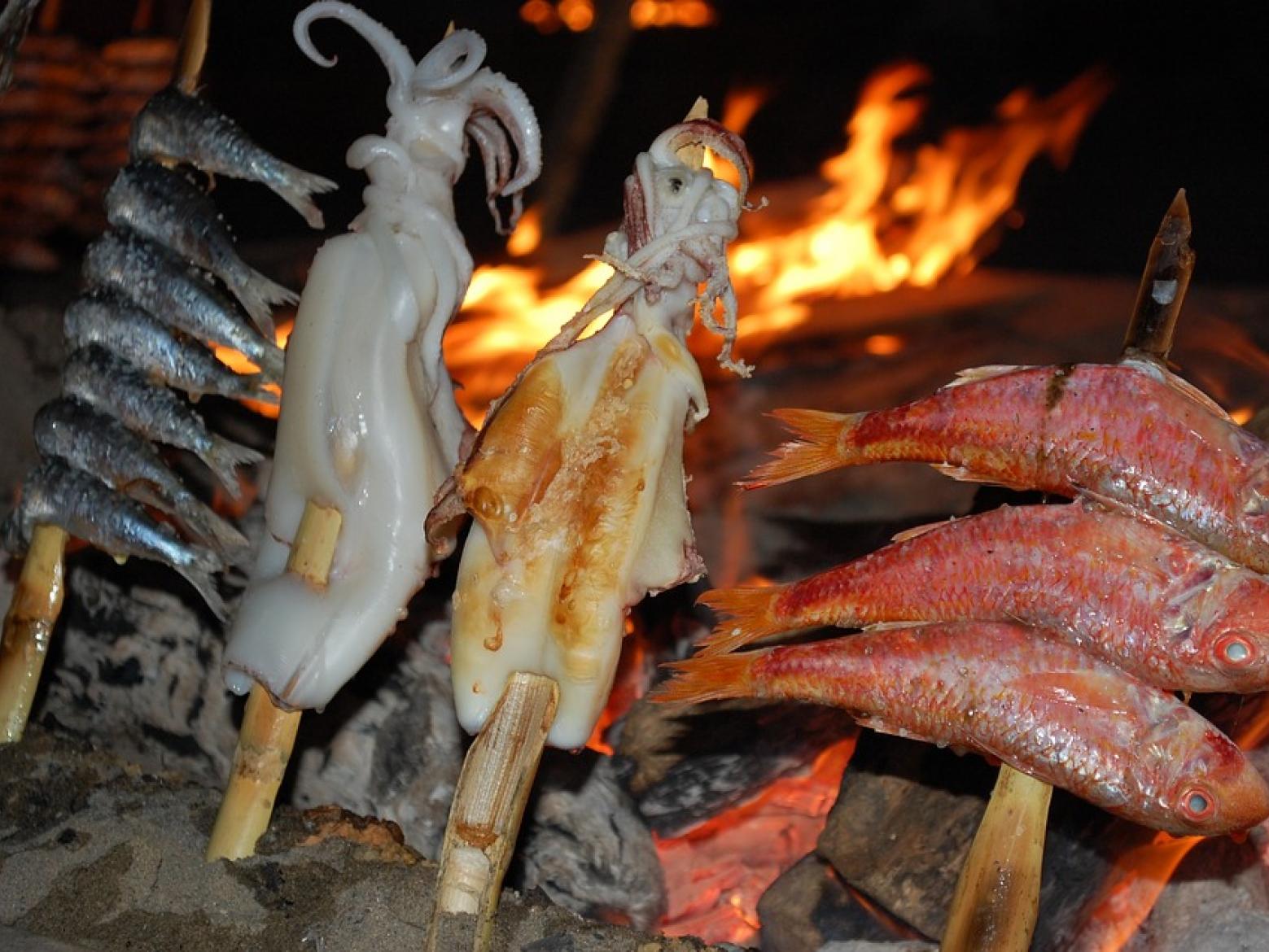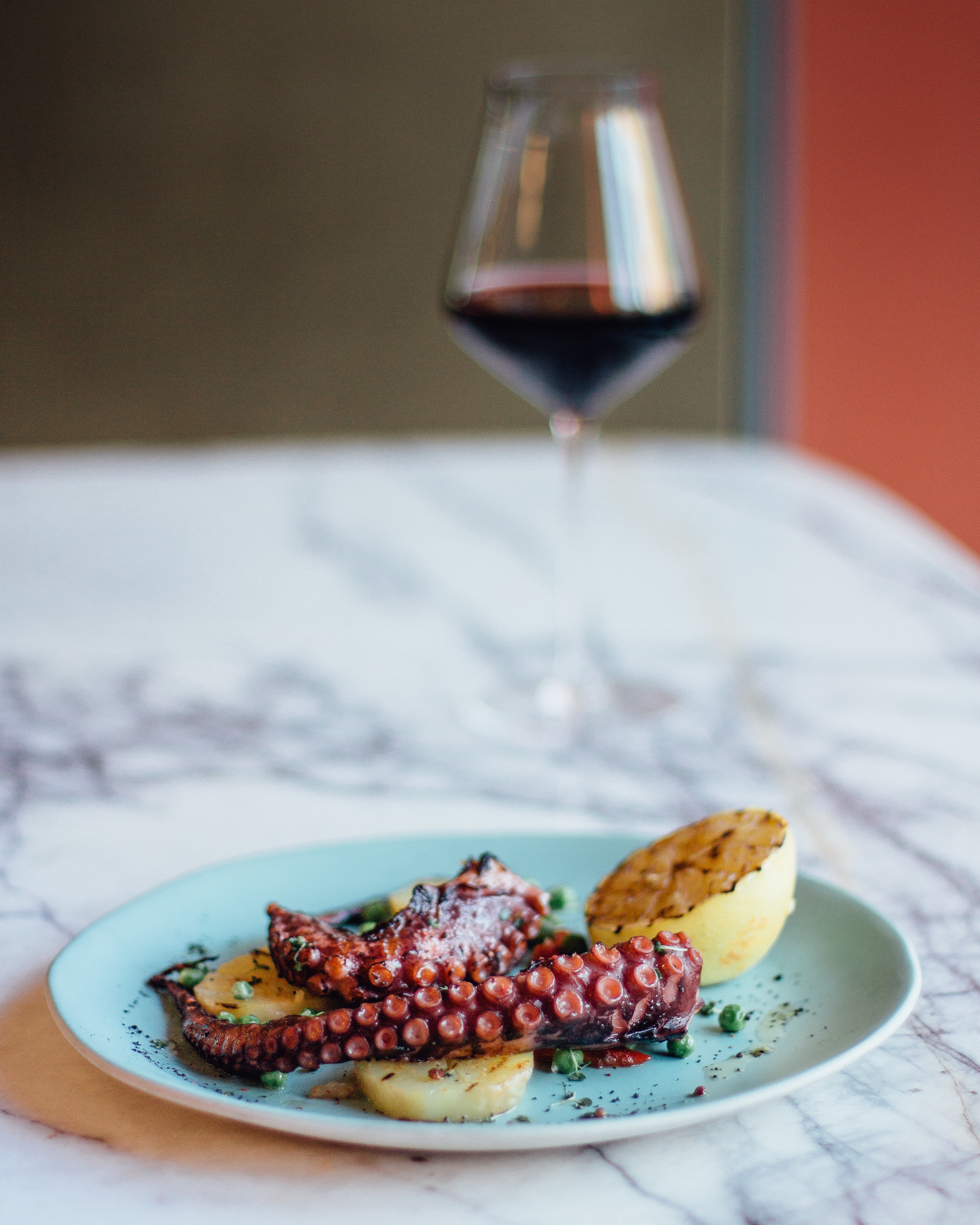Greek Wine Harmonies by Terry Kandylis
By Terry Kandylis
The question of how to best pair wine with food has been the cause of much debate among wine professionals, particularly Sommeliers. Master of Wine Tim Hanni dismissed the matter as 'bullsh*t' in an article that was published recently by Drinks Business; in this, he spoke passionately about the need to completely rethink the issue of food and wine pairing and questioned the reason for which a Sauvignon Blanc cannot be served with a Steak. On that note, he couldn’t find a better ally than Didier Dagueneau, who famously served his iconic wines with the ‘bloodiest’ steaks you could ever have. Of course, we could agree that Dagueneau’s Sauvignon Blancs weren’t, and aren’t, the most typical, as they have lots of weight, and a density and complexity that could withstand any type of food. And yes, I can agree with Hanni, to a certain degree, that it doesn’t really matter what one chooses to drink with the food eaten and vice versa. When my guests ask me what to have at home with a particular wine, I always say: “Your best friends and the people you love, the right moment and the ambience that will highlight this sharing of a great bottle of wine”. If we are about to drink a bottle of Pur Sang or Silex, it doesn’t really matter what we eat with it and I could easily have it with a T-Bone, roasted peppers, chimichurri and lots of garlic.
But wait, aren’t all of these flavours found in a typical Sauvignon, both Cabernet and Blanc?
As a Sommelier, throughout my career, I have put great effort into trying to find the best possible matches for certain ingredients and their combinations, but I hadn’t realised that the absolutely fundamental point is to never be dogmatic about these. I believe that we can agree that there is a certain degree of harmony in some classic pairings i.e. Sauternes and Roquefort, Sherry and Jamón, etc. During my time at the Ledbury, I worked closely with Chef patron Brett Graham on the food and wine pairings offered at the restaurant; we tried to offer our guests wines that they wouldn’t normally choose from the list. Think of it as a discovery session. And I use the word ‘offer’, because I truly hate the idea of trying to convince a guest that he shouldn’t have a red with his/her fish. Quite frequently, I serve octopus with light reds to my friends.
The book that completely changed my mind on how to approach Food and Wine pairings was ‘Taste Buds and Molecules: The Art and Science of Food With Wine’ by Canadian François Chartier. François is internationally regarded as one of the pioneering researchers in the creation of recipes and wine and food harmonies. His book refers to the work and research that took place at elBulli Restaurant with the world famous Chef Ferran Adrià. Their work on how to approach better harmony in food and wine pairing was ground-breaking and managed to answer many questions about why some of the most known pairings actually work. They ‘simply’ looked into the flavour and aromatic compounds that are found in food and wine.
I had the chance to meet François in Montreal, last year, and we had a great chat over the subject. His inspirational work made me think of ways to achieve better harmonies with some of Greece’s better known varieties. And I say Harmonies, as he does. Remember the rule to never be dogmatic?
My favourite pairings are:
Red Mullets with Robola
I come from the island of Evia and I always remember the sweet taste of Red Mullet (Barbounia in Greek). A stainless steel Robola, which has freshness and an unmistakable fennel, light aniseed character (something that I often find in the variety), together with its lemony acidity and almost Assyrtiko-like minerality will match a pan-fried red Mullet, with fennel and lemon, perfectly.
Salt crusted sea bream with braised leeks and hazelnuts, with Assyrtiko
Assyrtiko from Santorini can be quite phenolic, which can give lots of structure and oiliness, without compromising its ‘salty’ nature on the palate. It also has sharp acidity that can mask the sometimes rather elevated alcohol. The leeks, which contain a volatile sulfur compound like that of other alliums (garlic, onion, chives), can match the rather sulfuric nose of gunflint and matchstick that one can find in the fiery Assyrtikos of Santorini, whereas the hazelnuts add texture and can work well with some aged examples that show notes of noble oxidation.
Pitta bread with grilled lamb served with honey and mustard dressing, paired with a rich Nykteri or oaked Assyrtiko.
For many people, red wine goes with meat and fish is paired only with whites. A full bodied Assyrtiko that has been barrel fermented or a late-harvested wine like Nykteri, can easily show a honeyed character, with notes of sweet spices and nuts. The alcoholic strength of these wines is quite high, which gives extra richness and weight. The Maillard reactions (chemical reaction between amino acids and reducing sugars that gives browned food its distinctive flavour), in both the grilled meat and the wine that has been treated with oak, enhance the vanillin and caramel notes.
Crisp pork-belly, apricots and mash, with Vidiano
Just as lamb is rich in thymol, pork is rich in lactones, which gives it naturally rich fruity notes. Lactones belong to a family of molecules with expressive tones of apricots and peaches, hence many chefs have created recipes that match pork with fruits. Wines that are rich in lactones are those that have matured in oak barrels and Vidiano is a variety from Crete that has an affinity to oak and sometimes reminds me of a slightly oakier version of Chenin Blanc; a bit broader and less sharp.
Octopus cooked in red wine, with Orzo and tomatoes, with Xinomavro
Surprised? That’s definitely one of my absolute favourite pairings. Xinomavro in its youth, displays a wonderful mix of fresh cherries and strawberries, and is very vibrant and fruity. Some bottle maturation brings about magic as it starts to express its benchmark character of confit tomato, black olive and dried herbs. A wine that is always high in acidity, and for many wine professionals is similar to a Nebbiolo in structure, it can balance the acidity of the tomatoes nicely. Add some oregano and cumin and this will enhance the spicy notes that can work well with more ‘oaky’ examples.
Greek style roasted lamb with thyme, tzatziki and dry Mavrodaphne
Lamb has been linked to thyme for centuries. Thymol, the volatile compound responsible for the most important aromatic characteristic of thyme, is also the principal sapid molecule of lamb. Hence, lamb with rosemary or thyme are always a great match with red Bordeaux, in particular those of the Left bank. When I tried the Taos dry Mavrodaphne by Parparoussis, I discovered the southern Mediterranean answer to a great Cabernet Franc. A juicy black fruit character, wrapped with elegant notes of thyme and rosemary, that can match the herbal notes of the dish very well. Add tzatziki for extra freshness and make sure you add lots of mint and garlic!
Smoked aubergine & yogurt vol-au-vents with pomegranate, with a crunchy Agiorgitiko
Aubergine is one of those vegetables you either love or hate. In Greece we definitely love it, and for this reason it is present on our tables regularly and can be a wonderful side dish for meats or fish. Smoke and tobacco are essential notes of oak matured wines and Agiorgitiko is a variety that works well with a proportion of new oak barrels. It’s bright acidity and cherry character matches the freshness of pomegranate well, while the yogurt adds the lactic texture that develops with oak maturation.
About Terry
Terry Kandylis is the Head Sommelier of 67 Pall Mall, a private members' club for wine lovers and fine dining. He has won Best Sommelier in Greece in 2015 and UK Sommelier of the Year Competition in 2016.






